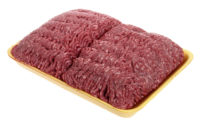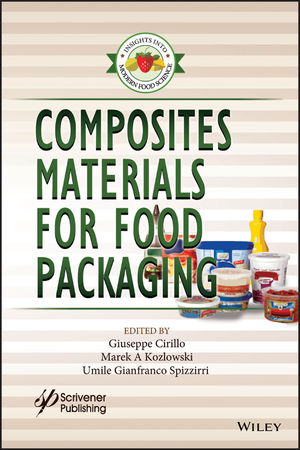Key considerations when purchasing food packaging equipment
Understand the difference between cost and price when purchasing new food packaging equipment.

The need to purchase new food packaging equipment or to upgrade an existing system is usually determined by four of five things—
1. Increased production demands lead to inadequate systems.
2. Existing packaging equipment is becoming undependable and/or approaching end of life.
3. Adding new and different products to the mix, therefore existing solutions are no longer adequate.
4. Moving from labor-intensive manual packaging to a more automated solution.
5. Embarking on a new business and are in need of initial machinery for packaging refrigerated or frozen foods.
Regardless of why you’re exploring the purchase of new packaging equipment, you should carefully consider the total cost of ownership (TCO) before making any decisions. The critical thinking that takes place before making the purchase decision is essential. A wise purchase decision now can pay dividends for years to come.
Price vs cost—determining the “true” TCO
The initial purchase and installation of a packaging system can be a significant part of your overall facilities investment, but it’s not the only cost. A machine that is difficult to operate, requires frequent repairs or is not adaptable to a dynamic food production environment can rob you of profits over time. Your goal should not be to purchase the cheapest packaging system that can do the job. Instead, try to view the purchase as a long-term investment, and predict how the purchase will affect your business goals both immediately and over several years.
Be prudent. Ask yourself the following questions before committing to any piece of packaging capital equipment: Is the system built to last? What are the maintenance requirements? How available is technical support, and are the service professionals adequately trained to keep your system up and running? Are spare parts readily available? Does the equipment carry a favorable warranty? Will the machine or technology soon become obsolete? Consider whether the machine can be upgraded to match your changing needs, and what are the costs involved in adequate employee training?
Employee training.Consider and plan for the ongoing cost of training packaging machine operators and maintenance personnel. High employee turnover is inherent in the food industry, and inadequate training is often the root cause of mistakes. For example, the cost of recalling a product due to a failed seal (resulting from an inadequately trained machine operator) can both impact profits and damage your brand. Look for packaging equipment that can be easily mastered and maintains and is safe to operate. Doing this can help reduce the cost of training as well as help improve productivity and maintain quality over time. Plus safe, easy-to-use machines can reduce the cost of operator injury.
Ensure technical support is readily available.There are few things worse than buying a food packaging machine—not having it work as anticipated and then learning that you are unable to receive the level of technical support needed to fix the problem. Ask if your supplier or integrator offers more than rudimentary technical support. Sometimes you have the capacity to order and replace consumable parts, make minor repairs and accomplish in-house upgrades. For something more complex, make sure you have access to a professional support organization that will respond quickly and keep your packaging downtime to a minimum.
The most common barriers to adequate product support involve language or distance, and sometimes, both. You may find that a local company will be more willing and able to provide the necessary technical support. The ideal situation is to purchase from an equipment distributor that services what they sell, even if that means paying a bit extra. Good technical support means providing a deep understanding of the system that goes well beyond its installation. This may include detailed preventative maintenance or other procedures that may be needed to comply with food safety or regulatory requirements. Good support needs to be accessible. Waiting hours can be a major inconvenience, but waiting days or weeks could cost a company an unimaginable amount in lost revenue.
How maintaining a clean environment can be costly
When focusing on the safe and sanitary processing of food, packaging equipment featuring stainless-steel construction is a logical choice. But, material choices are not the only consideration. Look for a design that is hygienic and reduces or eliminates the need for disassembly in order to maintain sanitary conditions. If the equipment must be disassembled, it should be accomplished quickly and preferably requiring few or no tools. Wet or dry food processing can be a dirty business, and routine cleaning is a fact of life. Organic matter can find its way into the smallest seams and cavities where it can collect and grow colonies of pathogens. Proper cleaning is a chore that is time consuming and cleanup is sometimes wet and almost always messy. Investing in an easy-to-clean design will more than pay for any premium cost over time.
Regulatory mandates will also continue to impact the food industry, even for the subset of food packaging. The FDA Hazard Analysis & Critical Control Points (HACCP) is an effective and rational means of assuring food safety from harvest to consumption, and packaging is a vulnerable step in the process. Preventing problems from occurring is the paramount goal underlying any HACCP system. It defines appropriate steps that may be taken to ensure that potentially contaminated food products do not reach the consumer.
Understand your food packaging requirements and weigh your options
When planning the optimal food production and packaging ecosystem, be aware that it may take more than one piece of packaging equipment to adequately provide the increased production and output necessary. Be open to weighing all of your options. Consider the questions regarding total cost of ownership. This, in all likelihood, will render the cost of a system more manageable and provide more long-term satisfaction with your food packaging equipment purchase.
Looking for a reprint of this article?
From high-res PDFs to custom plaques, order your copy today!









